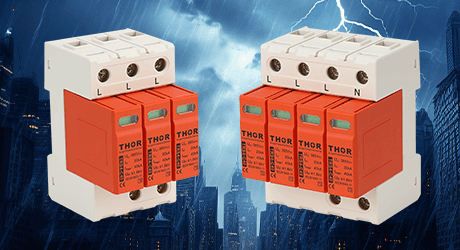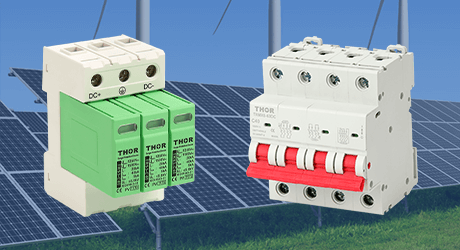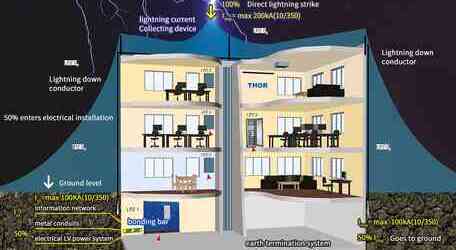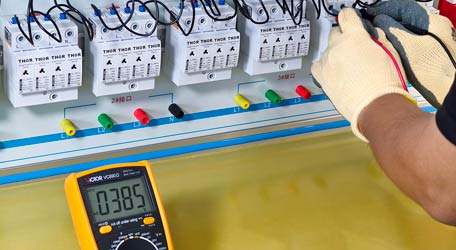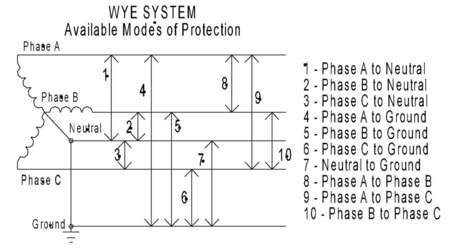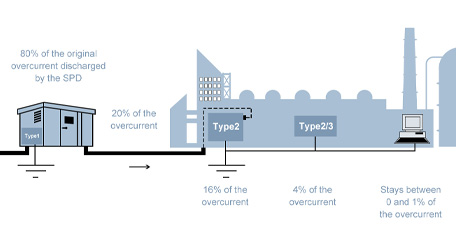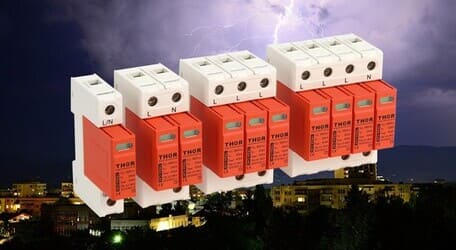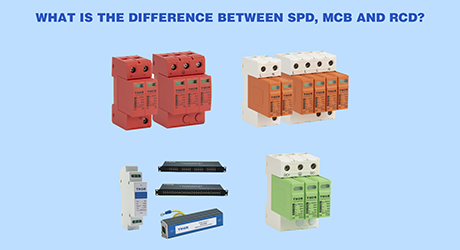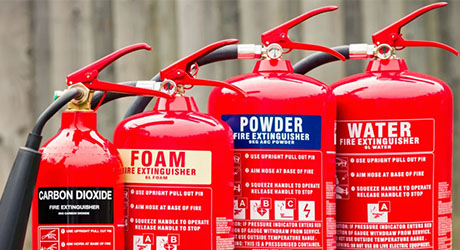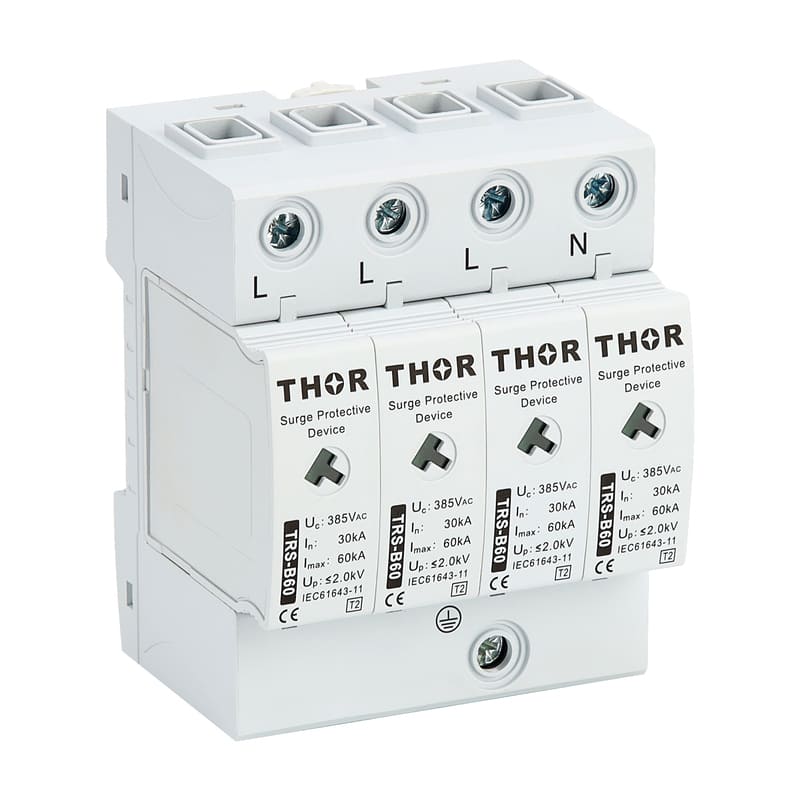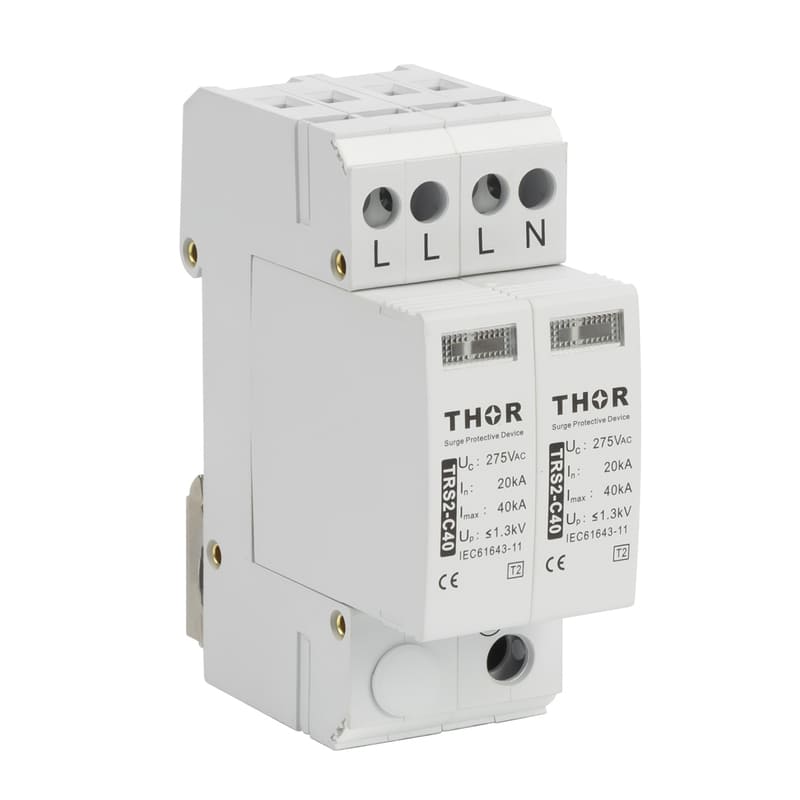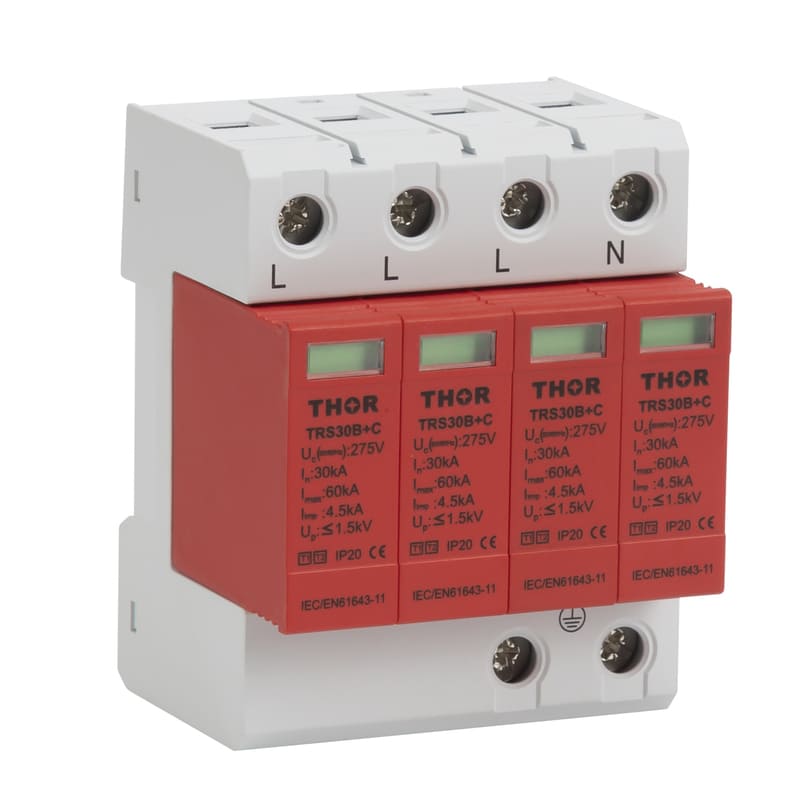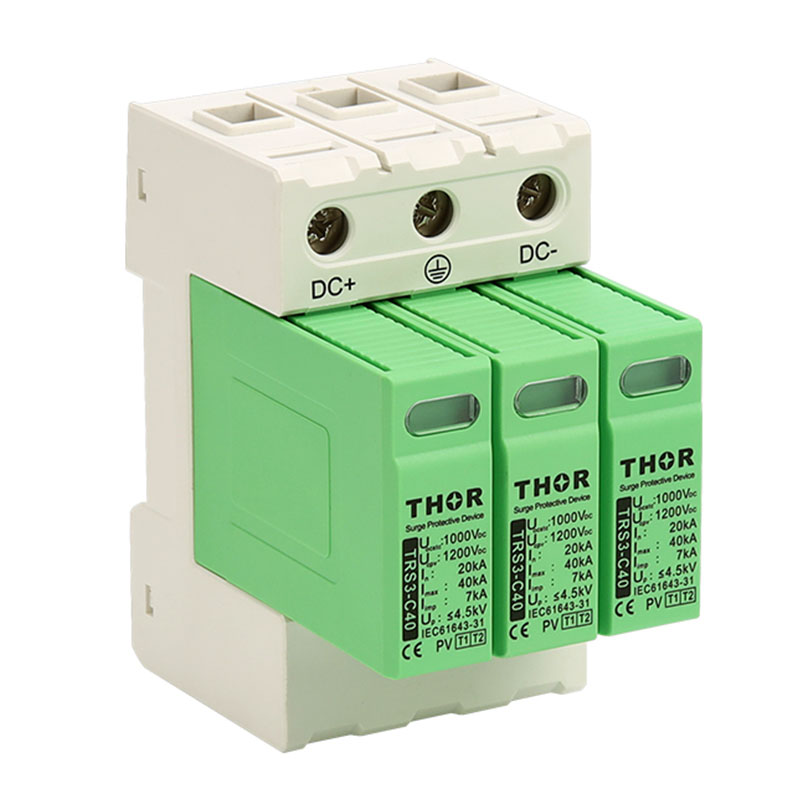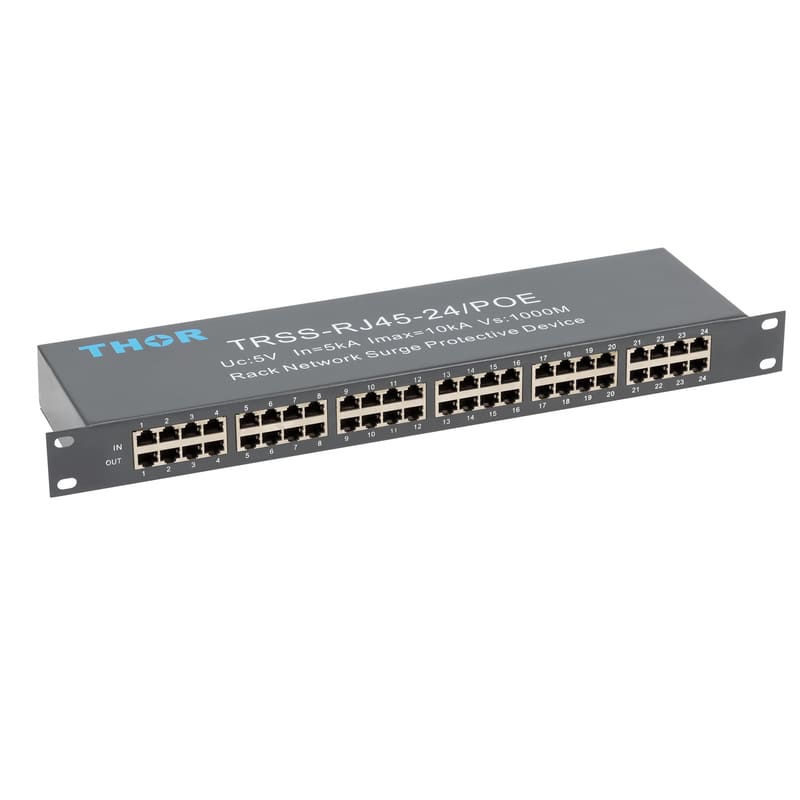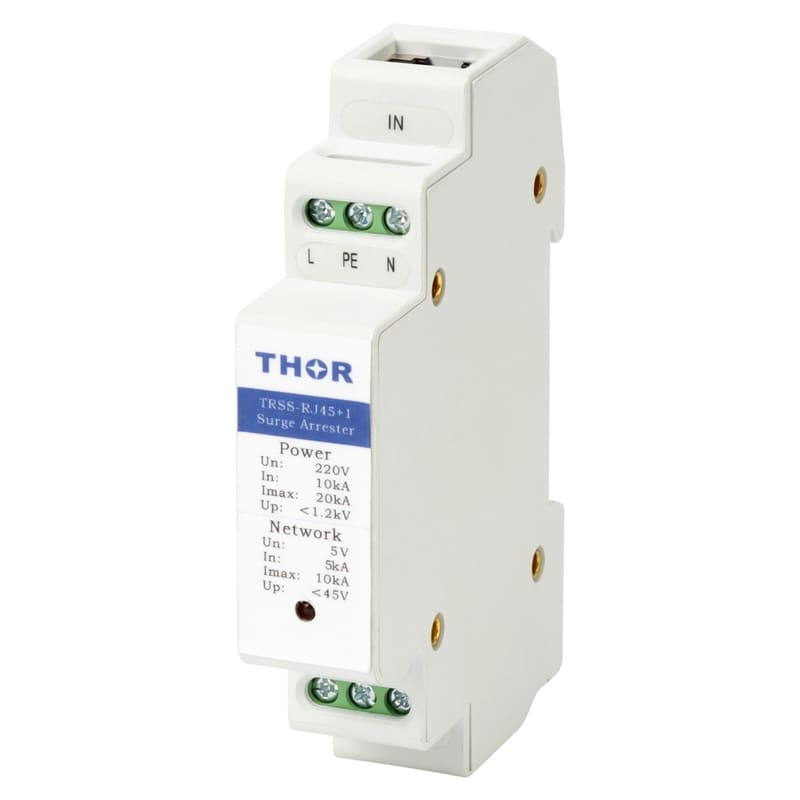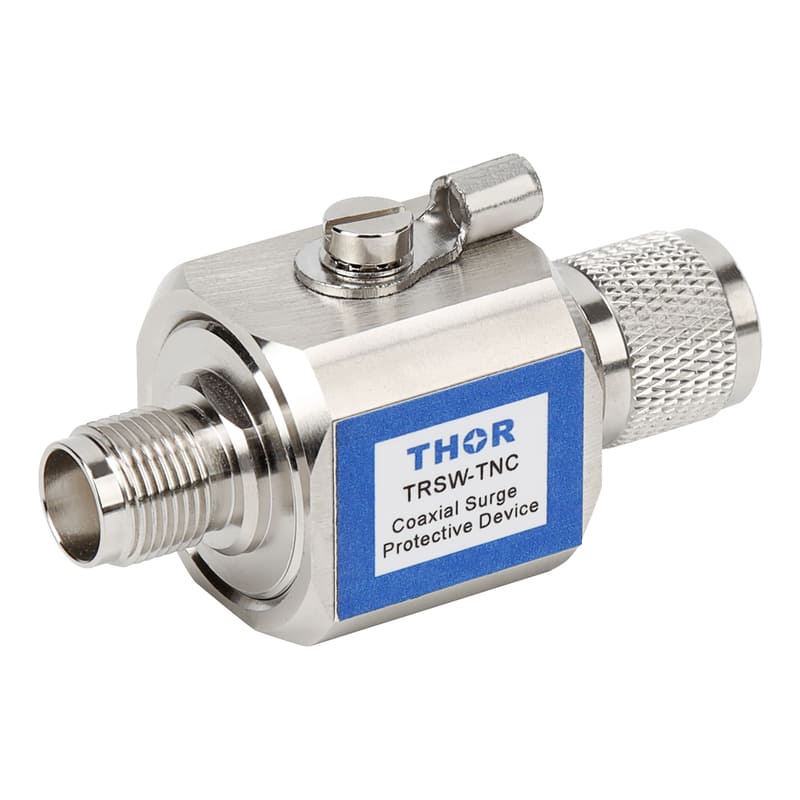When configuring surge protection systems with SPDs for 3-phase systems, here are some of the most frequently asked questions we’ve collected: what’s the difference between 3-Pole and 4-Pole SPDs? How to choose the right surge arresters for my system? Is 4-Pole SPD superior to 3-pole SPD?
This blog aims to answer these questions and offer a comprehensive guide to selecting the right SPDs for your 3-phase surge protection.
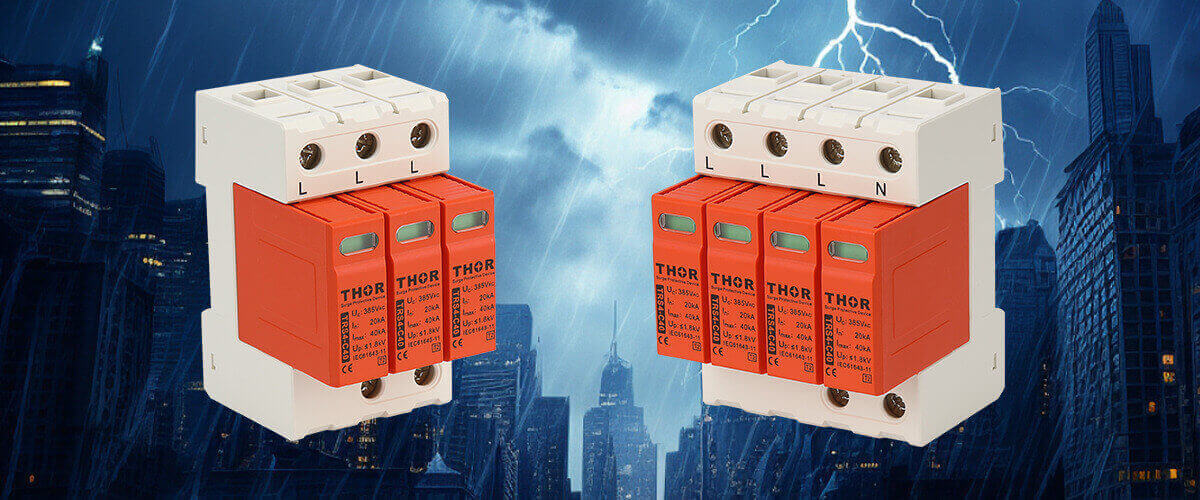
What is SPD and what is MOV
SPD, abbreviation of the term surge protective device and surge protection device, or called surge arrester and surge suppressor sometime, is a electric protective appliance widely used in electric circuits through various sectors to safeguard equipment connected from transient overvoltages, surge spikes, resulting from direct and indirect lightning sources.
The majority of surge protective devices in the market are composed by one of the three following surge discharging materials: Metal Oxide Varistor(MOV), Gas Discharge Tube(GDT), Suppressor Diode(TVS), with MOV being the most commonly used technology for protecting power circuits.
A MOV is a type of voltage-dependent resistor that exhibits a non-linear characteristic, making it an ideal solution for surge absorbing. Under normal operating conditions, the MOV presents a high impedance, allowing only a minimal amount of current to flow through it.

Figure 2 - Metal oxide varistor chip
When a voltage surge occurs, the MOV's resistance drops dramatically, transitioning to a low impedance state. Once the surge has passed, the MOV returns to its high impedance state, resuming its normal operation without affecting the circuit's performance.
Key differences in 3-pole and 4-pole SPDs
While both of two surge protective devices are applied to 3-phase AC power systems, the main difference at its core is that a 3-Pole SPD is designed for 3-phase systems without a neutral and a 4-Pole SPD is used in 3-phase systems with a neutral.
3-pole SPDs protect L1, L2, L3 phases only and cover phase-to-phase and phase-to-ground surges while 4-pole surge protective devices protect L1, L2, L3, and N (phases + neutral) and offer phase-to-neutral and neutral-to-ground protection.
TN earthing system overview (TN-C, TN-S, TN-C-S)
In this discussion, we focus exclusively on TN-C, TN-S, and TN-C-S grounding systems as they are the primary configurations for industrial three-phase electrical installations, which are more relevant to 3-pole and 4-pole surge protection device applications.
● TN-C System (Combined Neutral + Protective Earth)
TN-C earthing system uses a single conductor, known as the PEN (Protective Earthed Neutral) conductor, to combine both the neutral and protective earth functions. TN-C System setup is more common in older installations due to its simplicity and cost-effectiveness.

Figure 3 - TN-C Grounding System
● TN-S System (Separate Neutral + Protective Earth)
TN-S earthing system separates the neutral and protective earth conductors throughout the distribution system. This configuration enhances safety and reliability by providing dedicated paths for fault currents.
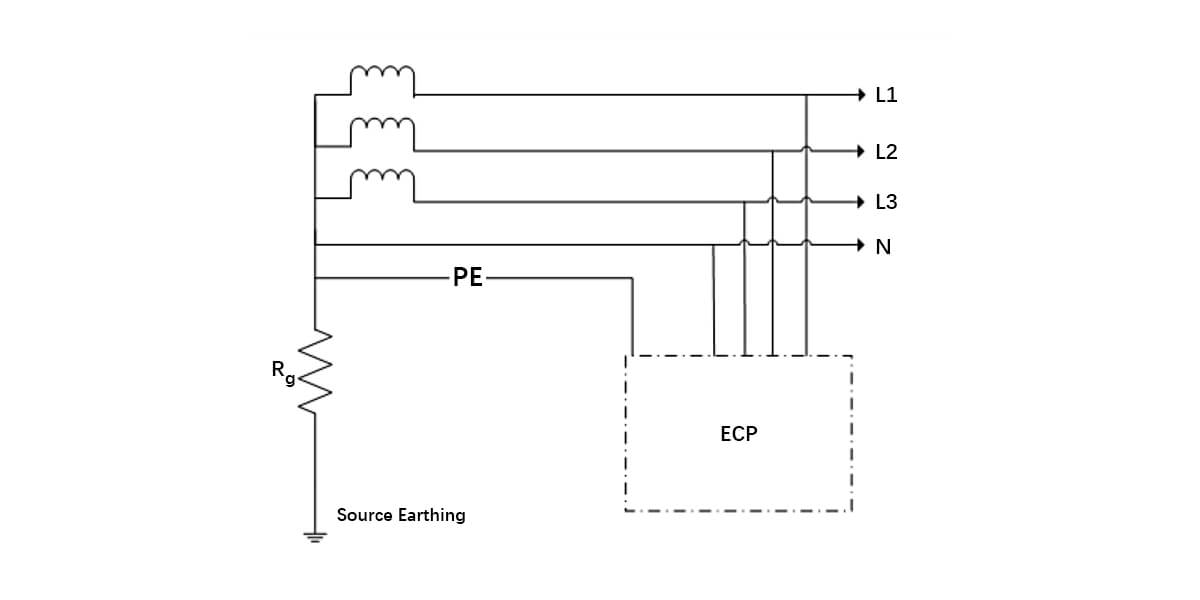
Figure 4 - TN-S Earthing System
● TN-C-S (Combined and Separate Neutral + Protective Earth)
TN-C-S system represents a hybrid configuration that combines elements of both TN-C and TN-S systems. It uses a combined PEN conductor on the supply side and separate N and PE conductors on the load side.
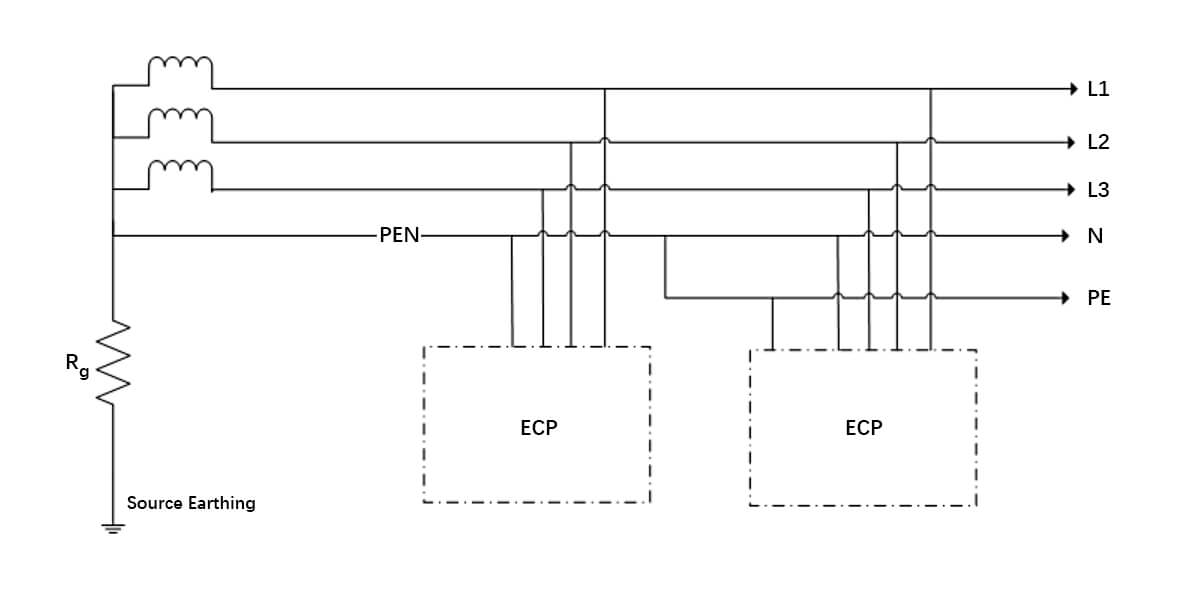
Figure 5 - TN-C-S Earthing System
3-pole or 4-pole? Choosing the right SPD for 3-phase surge protection configured with TN earthing systems
TN-C System
In a TN-C system (combined PEN conductor), a 3-pole SPD is typically used. Since the PEN line serves as both neutral (N) and protective earth (PE), there is no need for separate protection of the neutral conductor. The SPD connects across the three phases (L1, L2, L3) and the PEN line, ensuring surge currents are diverted through the PEN low-impedance path.
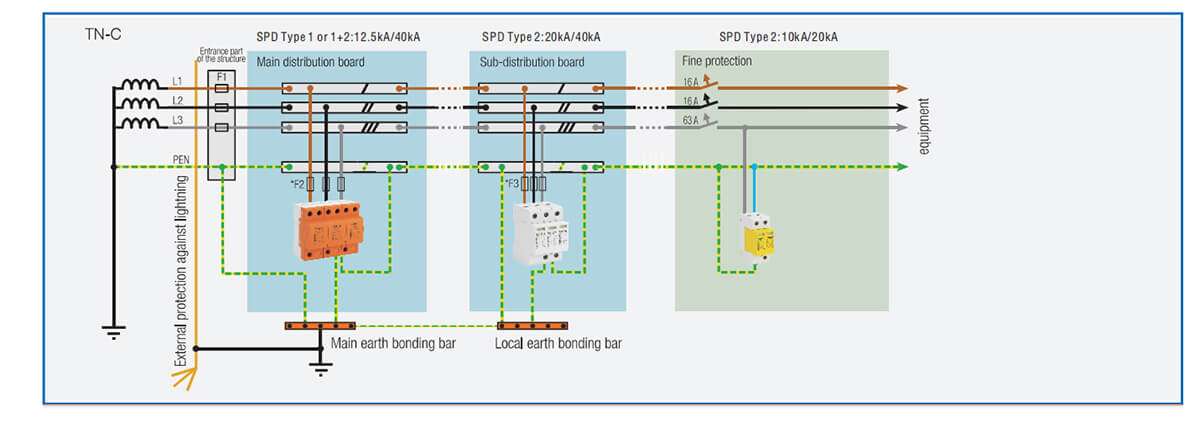
Figure 6 - TN-C SPD wiring
TN-C excels in effective cost and simplified installation, but it carries risks: if the PEN conductor breaks, equipment enclosures may become energized and cause fire. TN-C is common in older industrial facilities but is being phased out due to safety concerns. A 3-pole SPD suffices here, as the PEN inherently handles both neutral and grounding roles.
TN-S System
For a TN-S system (separate N and PE conductors), a 4-pole SPD is mandatory. The neutral (N) and protective earth (PE) are independent, so surges can develop between phases, neutral, and ground. The 4-pole SPD protects all three phases (L1, L2, L3) and the neutral (N), addressing both differential-mode (phase-to-neutral) and common-mode (neutral-to-ground) surges.
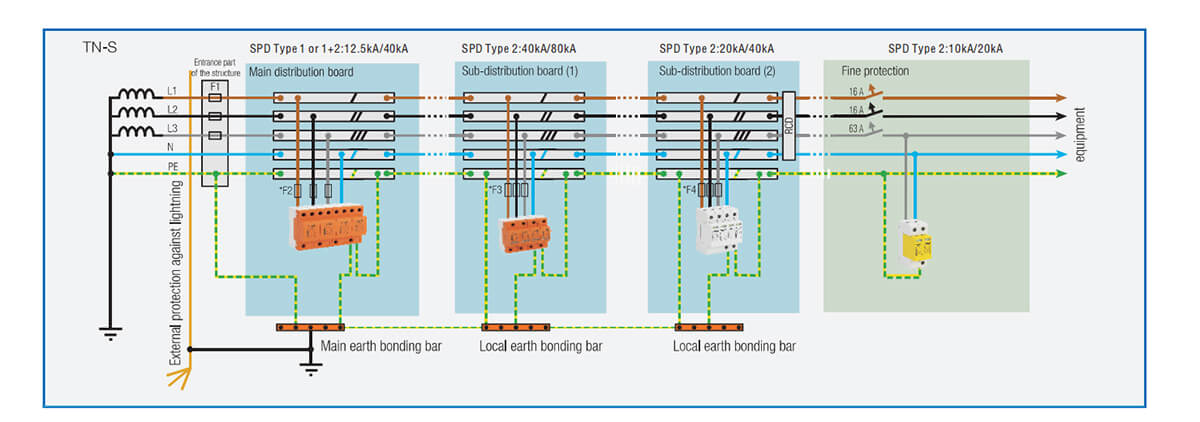
Figure 7 - TN-S SPD wiring
The independent setup lines enhance safety in critical environments like data centers or hospitals, where N-PE voltage spikes could damage sensitive equipment. Additional SPDs between N and PE may be required for comprehensive protection.
TN-C-S System
In a TN-C-S system, SPD selection depends on the network segment. The upstream TN-C section (PEN conductor) uses a 3-pole SPD (L1-L2-L3-PEN) to handle combined neutral/ground surges. Downstream, where TN-C transitions to TN-S (split into separate N and PE), a 4-pole SPD (L1-L2-L3-N) is required to protect the isolated neutral.
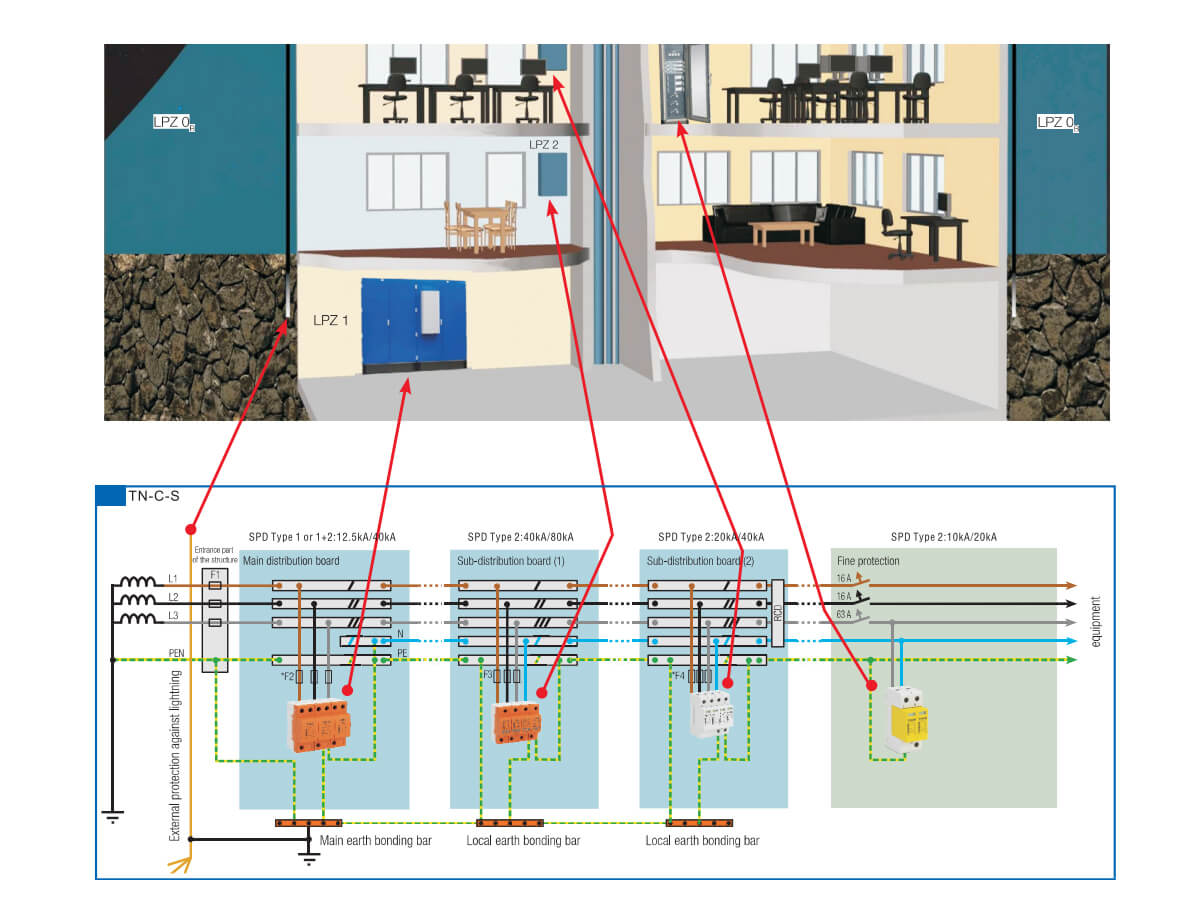
Figure 8 - TN-C-S SPD wiring
The hybrid approach balances cost and safety: the upstream 3-pole SPD leverages the PEN efficiency, while the downstream 4-pole SPD ensures compliance with TN-S safety standards. Critical separation of N and PE beyond the split point is essential to avoid PEN-related risks. TN-C-S is widely used in modern residential and commercial buildings, requiring careful SPD coordination across segments.
The choice of 3-pole and 4-pole surge arresters for 3 phase electrical installations with TN systems can be concluded as follows:
|
Earthing systems |
Chosen SPDs |
Protective lines |
Applications |
|
TN-C |
3-pole SPDs |
L1-L2-L3-N |
Outdated industrial facilities |
|
TN-S |
4-pole SPDs |
L1-L2-L3-PEN |
Factory, data center |
|
TN-C-S |
Both 3-pole and 4-pole SPDs |
L1-L2-L3-PEN upstream and L1-L2-L3-N and N-PE downstream |
Industrial power distribution |
Table 1 - Choosing surge protective devices for 3-phase systems with TN grounding
Is a 4-pole superior to a 3-pole surge protective device?
As we have discussed above, 4-pole surge protective device is used for TN-S and TN-C-S systems for enhanced line protection. Some may confuse that is 4-pole SPD better than 3-pole SPD?
NO! They are used for different systems and configurations. You can’t install a 4-pole SPD for TN-C systems to offer more comprehensive protection.
In TN-C systems, the PEN line combines neutral (N) and protective earth (PE). A 4-pole SPD (L1-L2-L3-N) is redundant and risky because the PEN already handles both roles. Installing a 4-pole SPD here may create unintended paths for surge currents, causing PEN line overload or equipment damage.
Always use surge protective devices that are compatible with the wring of the target protective structures!


